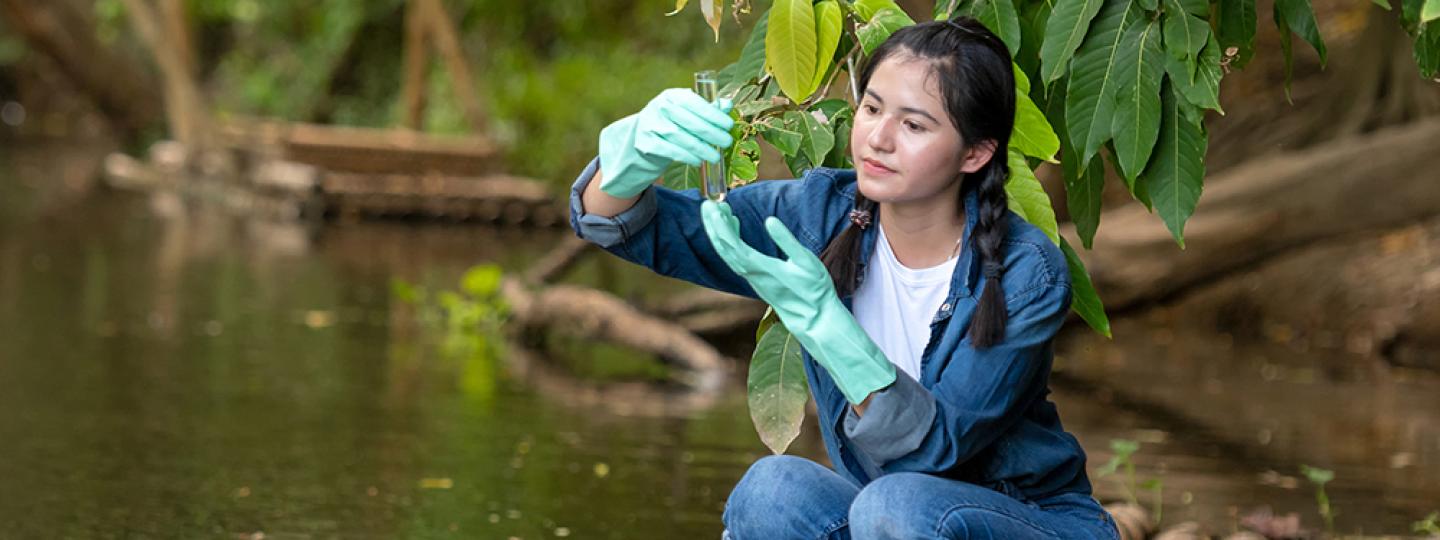Students gain flexibility with new natural science degree

The problem was limited options. A San Jacinto College student who declared a life or physical science major had to stick to science courses under the related umbrella.
The solution was flexibility. Beginning in fall 2021, San Jac's life and physical science degrees have merged into the new natural science Associate of Science degree, allowing students to customize their academic path. The program is available at all campuses.
Students will still have to complete core requirements, but they can choose the specific science and math courses that fit their career path or transfer university's requirements for their intended bachelor's degree.
"We were trying to eliminate barriers and decrease confusion when students are trying to select a pathway," Dr. Rhonda Bell, Central Campus dean of health and natural sciences, said. "By combining, they can choose the best classes to meet their educational and career goals."
The options also extend after graduation. If students choose to enter the workforce immediately, they can land solid entry-level jobs like technologist or research/chemical lab technician. If they choose to pursue their bachelor's degree first, all their San Jac credits will transfer so they can earn higher credentials and increase their salary potential.
Fields open to natural science degree holders include medicine, veterinary science, energy, forensics, environmental science, research/development, space science, meteorology, quality control, toxicology, genetics, and more.
Student Jeffrey Newcomb started as a life science major, hoping to get core classes out of the way while applying for the radiography program. A U.S. Navy carpenter, he was deployed for a year in the middle of his schooling. The hands-on work and personal research changed his course.
Newcomb switched to natural science when he returned to San Jac this fall. After earning his associate degree, he plans to pursue marine biology at the University of Houston-Clear Lake.
"Now I can take chemistry or physics and still be within my degree plan," he said. "I want to make sure all my classes will still go toward my degree and allow me to have a smoother transition to the university."
According to Martha Robertson, assistant vice chancellor for teaching and learning, merging life and physical sciences stemmed from a larger task force discussion that started in 2018.
Faculty, department chairs, deans, and student services representatives examined the College's Associate of Arts and Associate of Science degrees to ensure all 60 credit hours transferred. They researched what universities required, then suggested tweaks to streamline academic pathways for students.
The task force found most schools don't separate life and physical sciences, so merging the two degrees was a no-brainer.
"We could generically write out a [degree] description," Robertson said. "It didn't matter whether you took biology or physics. You could get the degree."
One degree also eliminated the issue of students losing credits if they switched from life to physical science or vice versa.
"Since the new degree includes life science and physical science pathways, students will not have to change their declared degrees if they change their mind about their pathway," said Susan Starr, North Campus department chair of natural sciences.
What remains the same? Bell says research.
"We'll continue to have a research focus," she said. "This degree [just] streamlines the available courses to students. Each campus is a little different, but all campuses have some component of undergraduate student research."
Why pursue natural science?
San Jac offers a wealth of resources to STEM students:
- Savings: Many Open Books courses with free or reduced-cost textbooks
- Funding: Department scholarships, internship opportunities, and LSAMP or N2B stipends
- Connections: Research opportunities, STEM student clubs, and community outreach programs
- Environment: Low faculty-to-student ratios for increased engagement and new science buildings with modern labs and equipment
Learn more about the natural science degree.
